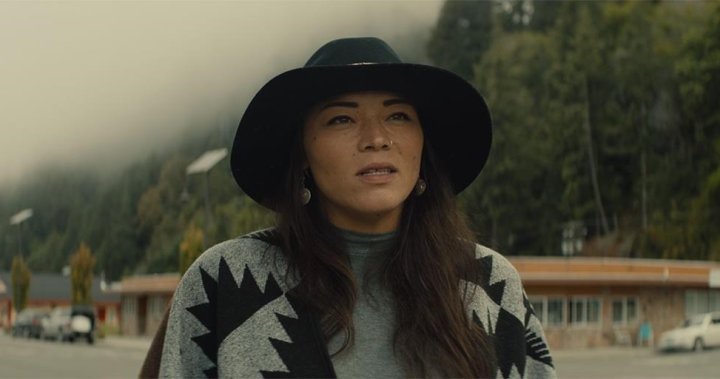TIFF 2023: ‘Boil Alert’ doc examines most ‘egregious’ water crisis examples in North America | Globalnews.ca
TORONTO — When documentarian James Burns and Apache guitarist Stevie Salas set out to create a film that examined the ongoing impacts of the water crisis in Indigenous communities, the two knew they wanted the final piece to be an exploration of identity and how it’s tied to Earth’s most abundant natural resource.
The result is an ambitious 104-minute documentary that blends unscripted real-life moments with scripted vignettes to go beyond the template of using statistics and experts to put the spotlight on an issue that transcends geographical boundaries.
“Boil Alert” follows Mohawk activist Layla Staats as she visits communities in Canada and the United States living under boil water advisories and First Nations who have had their water contaminated by toxins. Throughout the film, Staats shares her own personal battles as a person reconnecting with her Mohawk identity.
“It was important that we told a story that wasn’t just about the water, but it was about somebody who was on a parallel journey to finding themselves,” Burns said in an interview.
“I think that creates more empathy.”
“Boil Alert” is set to premiere Friday at the Toronto International Film Festival.
Burns and Salas previously worked on the 2020 documentary “Water Walker,” which followed Anishinaabe water activist Autumn Peltier as she advocated for clean drinking water at the United Nations.
For their latest project, Salas relied on the connections he’s made through the music business and his Six Nations of the Grand River- based production company, Seeing Red 6 Nations, to find the perfect person to bring their vision to life.
Salas was introduced to Staats about three years ago through her brother, musician Logan Staats who also makes an appearance in the film.
Staats had produced her own mini-documentary on water accessibility and expressed interest in being the face of the directors’ larger-scale project.
But, it would take some coaxing from Burns and Salas for Staats to let her guard down and invite viewers into her own journey.
“She really had to sit and bare her soul. She really had to let it all out there in front of everybody,” said Salas.
“It was the only way it was going to be effective as a story for others to be motivated and inspired.”
Filming started in 2021 with the crew visiting the remote Oji-Cree community of Neskantaga First Nation in northwestern Ontario, which has been under a boil water advisory for 28 years _ the longest in the country.
They travelled to Grassy Narrows First Nation, an Ojibwe community also in northwestern Ontario. The First Nation has spent decades fighting governments to answer for the damage done after a paper mill dumped tonnes of toxic mercury in a nearby river in the 1960s. Residents have grappled with long-standing mental and physical health issues from mercury poisoning.
Across the border, Staats spoke with members of the Navajo Nation who are still living with the impacts of the 1979 Church Rock Nuclear Disaster in New Mexico _ dubbed the largest radioactive accident in U.S. history.
Much has been written and documented about these communities, but Burns said it was important to focus on the “most egregious” examples of water insecurity.
“It begs the questions, ‘why has nothing still been done?”’ he said.
“We got to continue shedding light and giving people from those communities a voice to talk about what’s happening there.”
At the heart of the documentary are stories from residents living with neurological disorders because of mercury poisoning or youth who have never had access to clean drinking water in their lifetime and the impact it has on their mental health.
Burns wanted to add another dimension to the emotions Staats grappled with while learning about the inequalities First Nations have since colonization.
Sprinkled throughout the film are scripted, dreamy vignettes that parallel Staats’ journey and feature four well-known Indigenous women who are at different stages in their lives _ Peltier, actress Jessica Matten, choreographer Santee Smith and actress Michelle Thrush.
Burns sees the final product as a peek into the grim future larger cities and communities face if governments do not act to protect water sources.
“Hopefully, not only does it raise awareness about what’s happening in Indigenous communities, but what’s happening on a wider scale with water insecurity.”
© 2023 The Canadian Press
For all the latest entertainment News Click Here




